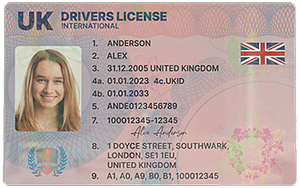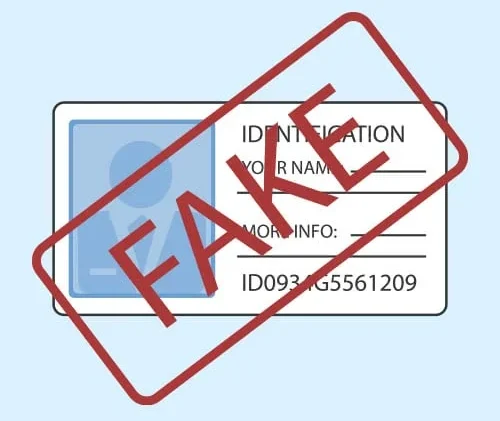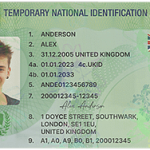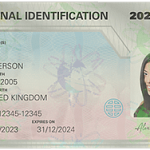Using a fake ID card is an illegal and unethical act that can have serious consequences. It is important to understand the potential risks and the likelihood of getting caught when engaging in such behavior.
The Legality of Fake ID Cards
Fake ID cards are counterfeit documents that are designed to deceive others into believing that the person using it is someone they are not or has different age – related privileges. In almost all jurisdictions around the world, the creation, possession, and use of fake ID cards are illegal. These laws are in place to protect the integrity of official identification systems, prevent fraud, and safeguard public safety. For example, in the United States, using a fake ID to purchase alcohol or enter a bar when underage is a criminal offense in many states. Depending on the state and the circumstances, it can range from a misdemeanor to a felony, which may result in fines, community service, or even jail time.
Factors Affecting How Long One Can “Get Away” with Using a Fake ID
Quality of the Fake ID
The quality of the fake ID plays a crucial role in determining how long it can go undetected. High – quality fake IDs may have features that closely mimic real identification documents, such as holograms, microprinting, and proper lamination. However, even the best – made fake IDs are not perfect. Security features on legitimate IDs are constantly evolving, and law enforcement and other authorities are trained to spot the slightest discrepancies. For instance, a fake ID with a poorly – replicated hologram or incorrect font may be quickly identified as counterfeit. In contrast, a more sophisticated fake ID might take longer to be detected, but it is still only a matter of time before its flaws are noticed.

How Often the ID is Used
The frequency of using a fake ID also affects the probability of getting caught. If an individual uses a fake ID only occasionally, say once or twice a year, there is a lower chance of being detected compared to someone who uses it regularly. Regular use increases the exposure to different individuals who may be trained to check IDs, such as bouncers at nightclubs, liquor store clerks, or law enforcement officers during routine checks. Each time the fake ID is presented, there is an opportunity for it to be scrutinized and for its fake nature to be discovered. For example, a college student who uses a fake ID every weekend to enter bars is much more likely to be caught than someone who uses it only on a special occasion.
The Scrutiny of the ID – Checker
The level of scrutiny by the person checking the ID is another significant factor. Some ID – checkers, such as those at high – end nightclubs or government – regulated establishments, are more likely to be well – trained and meticulous in their ID checks. They may use special equipment, such as ID scanners, to verify the authenticity of the document. On the other hand, at some less – regulated or busy places, the ID check may be more cursory. However, even in these cases, if the fake ID has obvious flaws, it can still be detected. For example, a bouncer at a popular nightclub may be trained to look for signs of tampering, such as uneven edges or misaligned text on the ID.
Law Enforcement Activity
The level of law enforcement activity in the area can also impact how long one can use a fake ID undetected. In areas with high police presence or where there are frequent anti – underage drinking or fraud crackdowns, the risk of getting caught with a fake ID is significantly higher. Law enforcement agencies may conduct sting operations specifically targeting the use of fake IDs, especially in areas with a large student population or high – traffic nightlife spots. For instance, during holiday weekends or special events, police may increase their patrols and focus on ID checks at bars and liquor stores, making it more difficult to use a fake ID without being noticed.
Consequences of Being Caught with a Fake ID
Once caught using a fake ID, the consequences can be severe. As mentioned earlier, it can lead to criminal charges, which may include fines, community service, and in some cases, imprisonment. In addition to the criminal penalties, there are also other long – term implications. For students, getting caught with a fake ID can result in disciplinary actions from their educational institutions, such as suspension or expulsion. It can also have a negative impact on their future employment prospects, as many employers conduct background checks and may be reluctant to hire someone with a criminal record related to fraud or illegal identification use. Furthermore, a conviction for using a fake ID can affect one’s ability to obtain certain licenses, such as a driver’s license in some cases, or may lead to increased insurance premiums.
How Fake IDs are Detected
Visual Inspection
One of the most common methods of detecting fake IDs is through visual inspection. Trained ID – checkers look for various signs of forgery, such as the quality of the paper, the printing, and the lamination. Real IDs typically have high – quality paper with specific watermarks or security threads embedded within it. The printing should be sharp and clear, with no smudging or bleeding of ink. The lamination should be even and without air bubbles or signs of tampering. For example, a fake ID with a rough – looking lamination or faded text is likely to be identified as counterfeit during a visual inspection.
ID Scanners
Many establishments now use ID scanners to verify the authenticity of identification documents. These scanners can read the magnetic stripe or the RFID chip (in some modern IDs) on the card and compare the information with a database of legitimate IDs. They can also check for specific security features, such as holograms or microprinting, that are unique to real IDs. If the information on the ID does not match the database or if the security features are not present or are inconsistent, the scanner will flag the ID as potentially fake. For example, if an ID scanner detects that the date of birth on the ID does not match the encoded information on the magnetic stripe, it is a strong indication that the ID is counterfeit.
Law Enforcement Databases
Law enforcement agencies maintain databases of known fake ID manufacturers and distributors, as well as records of previous fake ID cases. When an ID is suspected to be fake, it can be cross – referenced with these databases. If the design, serial number, or other characteristics of the ID match those of a known fake ID, it is likely to be identified as counterfeit. Additionally, law enforcement may use forensic techniques, such as fingerprint analysis or document examination, to determine the authenticity of an ID, especially in more serious cases.
Common Problems and Solutions Related to Fake ID Use
Problem 1: Unaware of the Legal Consequences
Many individuals, especially young people, may not fully understand the seriousness of using a fake ID. They may think it is a harmless prank or a way to gain access to certain privileges, such as buying alcohol or entering clubs. However, as described earlier, the legal consequences can be far – reaching and long – lasting.
Solution: Education is key. Schools, parents, and community organizations should provide comprehensive information about the laws regarding fake ID use and the potential consequences. This can include workshops, informational brochures, or guest speakers who are law enforcement officers or legal experts. By raising awareness, individuals are more likely to make informed decisions and avoid using fake IDs.
Problem 2: Believing Fake IDs are Indistinguishable from Real Ones
Some people may be misled by false claims from fake ID manufacturers that their products are perfect replicas and cannot be detected. They may invest in expensive fake IDs, thinking they are safe, only to be caught later.
Solution: Publicize the fact that no fake ID is truly perfect and that law enforcement and ID – checkers are constantly trained to spot fakes. Share examples of how fake IDs are detected, such as through visual inspection or the use of ID scanners. This can help dispel the myth that fake IDs are foolproof and discourage people from using them.
Problem 3: Peer Pressure to Use a Fake ID
Young people, especially those in social settings like college campuses or nightlife environments, may face peer pressure to use a fake ID. They may feel left out if they do not participate in activities that require an ID, such as drinking at bars or clubs.
Solution: Promote alternative social activities that do not require the use of fake IDs. Organize events on campus or in the community that are alcohol – free and inclusive for all ages. Additionally, encourage open communication among friends about the risks and consequences of using fake IDs, and support those who choose not to engage in such behavior.
Problem 4: Difficulty in Finding Legitimate Identification – Related Solutions
Some individuals may consider using a fake ID because they have legitimate identification – related issues, such as lost or stolen IDs, and are facing difficulties in obtaining replacements in a timely manner. For example, a traveler who has lost their ID abroad may be in a difficult situation and may be tempted to use a fake ID as a quick fix.
Solution: Improve the processes for obtaining replacement IDs. Government agencies should streamline the application and issuance procedures for lost or stolen IDs, making them more accessible and efficient. Provide clear information on how to obtain replacements, including online options and emergency services for travelers. This can reduce the temptation for individuals to resort to using fake IDs.
Problem 5: Lack of Enforcement in Some Areas
In some areas, there may be a perception that law enforcement is lax in cracking down on fake ID use. This can embolden individuals to use fake IDs, thinking they are less likely to be caught.
Solution: Law enforcement agencies should increase their visibility and enforcement efforts in areas where fake ID use is prevalent. Conduct regular patrols and sting operations, and make it clear that using a fake ID is a serious offense. Additionally, collaborate with local businesses, such as bars and liquor stores, to ensure that they are vigilant in ID checks and report any suspicious activity.



